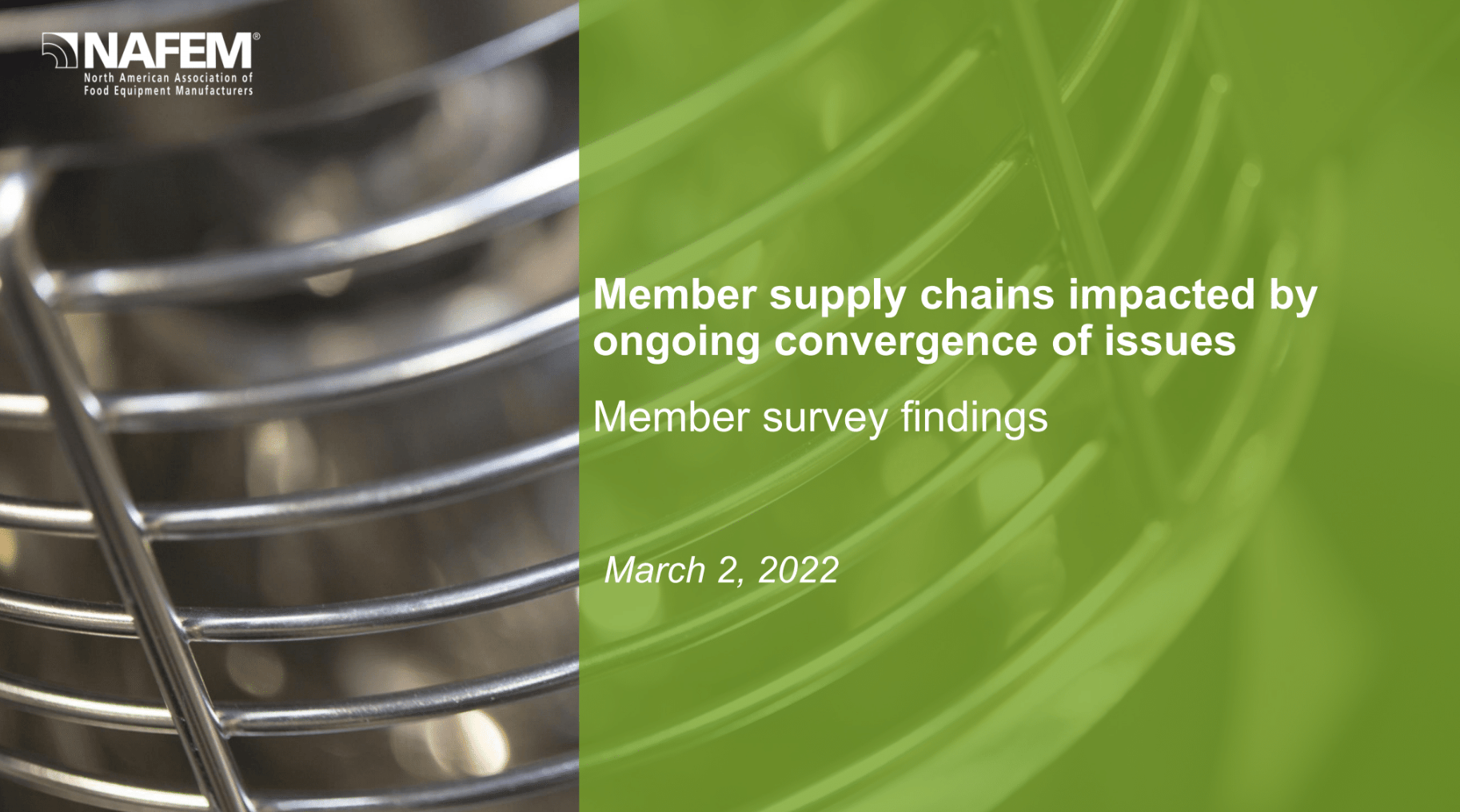
For the third time since April 2021, the North American Association of Food Equipment Manufacturers (NAFEM) has conducted its supply chain survey and although the pressures have shifted slightly, shipping costs and supply shortages remain the most pressing issues.
“Supply shortages continue across the board and transportation issues also remain in play,” says NAFEM Vice President, Regulatory & Technical Affairs, Charlie Souhrada, CFSP.
The ability of member companies to fulfil orders, control costs and grow their businesses has been compromised by these continuing supply chain issues, and the situation in the $15 bn US foodservice equipment and supplies industry appears to have not improved since last year.
Staff shortages make an impact
In fact, the deepening workforce challenges are creating more pressure on manufacturers’ ability to meet the equipment needs of the foodservice industry. NAFEM also asked its members about workforce challenges during this February 2022 survey.
More than 80% of respondents expect to increase their workforce in 2022, yet the same number report difficulties in recruiting and retaining employees. Overall, workforce challenges impact respondents’ abilities to grow (83%), fulfill orders (75%), control costs (51%) and compete (37%).
Shifts since August 2021
Respondents reporting difficulties accessing essential steel and aluminum has decreased slightly since the previous August 2021 survey – down from 75% to 66%, although that is still more than the 52% reported in April 2021.
Despite respondents reporting that transportation issues have had less impact and a slight reduction in delays across all modes, 98% of the companies report that shipping challenges continue to impact their abilities to fulfill orders.
Semi-conductor shortages are improving – reported to be down from 43% to 32%, although plastics shortages remained much the same. Additionally, delays in receiving component parts, or inputs, continue to cause delays in the delivery of finished goods.
“The survey results provide some encouraging news but confirm that we cannot take our foot off the gas,” says Souhrada. “This data sets our priorities for 2022 as we work with elected and appointed officials to help mitigate these supply chain concerns so our members can increase the good-paying manufacturing jobs they provide in communities across the country.”
Jacquetta Picton
